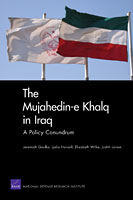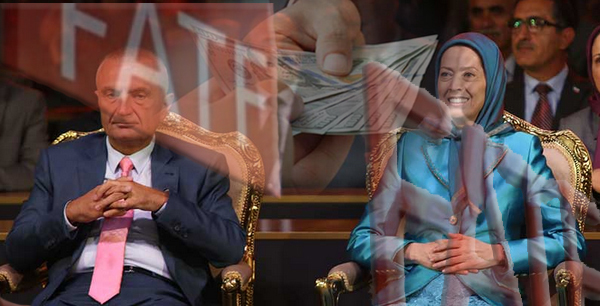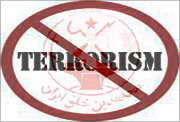… A RAND study examined the evolution of this controversial decision, which has left the United States open to charges of hypocrisy in the war on terrorism. An examination of MeK activities establishes its cultic practices and its deceptive recruitment and public relations strategies. A series of coalition decisions served to facilitate the MeK leadership’s control over its members. The government of Iraq wants to expel the group, but no country other than Iran will accept it. Thus, the RAND study concludes that the best course of action would be …
___________________
The Mujahedin-e Khalq in Iraq
A Policy Conundrum
by Jeremiah Goulka, Lydia Hansell, Elizabeth Wilke, Judith Larson
During Operation Iraqi Freedom, coalition forces classified the Mujahedin-e Khalq (MeK), an Iranian dissident group dedicated to the violent overthrow of the Iranian government, as an enemy force. The MeK had provided security services to Saddam Hussein from its camps in Iraq and had been listed as a foreign terrorist organization by the Secretary of State. After a cease-fire was signed, the U.S. Secretary of Defense designated this group’s members as civilian “protected persons” rather than combatant prisoners of war under the Geneva Conventions. A RAND study examined the evolution of this controversial decision, which has left the United States open to charges of hypocrisy in the war on terrorism. An examination of MeK activities establishes its cultic practices and its deceptive recruitment and public relations strategies. A series of coalition decisions served to facilitate the MeK leadership’s control over its members. The government of Iraq wants to expel the group, but no country other than Iran will accept it. Thus, the RAND study concludes that the best course of action would be to repatriate the majority of its members to Iran, which in 2003 granted amnesty to the MeK rank and file and appears to have upheld its commitment. The coalition’s experience with the MeK also offers lessons for dealing with unusual militias in future military actions and for providing better training for field commanders and enlisted personnel.
Table of Contents
Chapter One
The Mujahedin-e Khalq: A U.S. Policy Conundrum
Chapter Two
The MeK During Operation Iraqi Freedom
Chapter Three
Options for Relocating the MeK
Chapter Four
Unexpected Challenges, Unintended Consequences, and Lessons Learned
Appendix A
A Brief History of the MeK Prior to Operation Iraqi Freedom
Appendix B
Cultic Characteristics of the MeK
Appendix C
Timeline of MeK Activities
Appendix D
What Is a Foreign Terrorist Organization?
Research conducted by
RAND National Security Research Division
To View The Full Document Click Here





